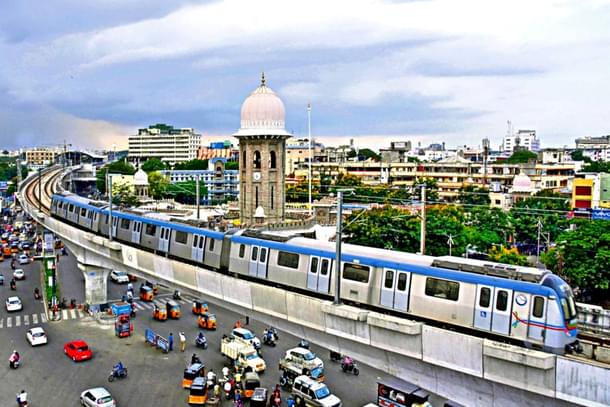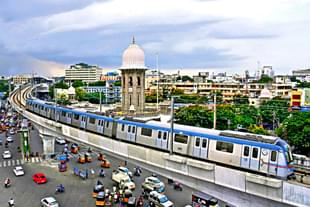Infrastructure
Explained: Why L&T Wants Out Of Hyderabad Metro And The Road Ahead
V Bhagya Subhashini
May 20, 2024, 03:23 PM | Updated 03:18 PM IST
Save & read from anywhere!
Bookmark stories for easy access on any device or the Swarajya app.


The recent announcement by Larsen & Toubro (L&T) to divest its ownership stake in the Hyderabad Metro Project post-2026 has sparked a debate regarding public transport policies of state governments in India.
The Hyderabad Metro is the world's largest metro project in a public-private partnership (PPP) mode. L&T is a major stakeholder in Hyderabad Metro with a 90 per cent share with the remaining 10 per cent owned by the Telangana state government.
Reasons For L&T's Divestment Plan
R Shankar Raman, L&T's President and CFO, highlighted a notable shift in commute patterns among Hyderabad's residents as the reason for L&T's decision.
The introduction of the Mahalakshmi bus scheme by the Congress government, offering free rides to women and transgenders on government-operated non-AC buses, has significantly impacted metro ridership, according to Raman.
The decline in ridership due to the bus scheme has serious financial implications for L&T. To address this, L&T secured a Rs 3,000 crore soft loan from the Telangana government to alleviate immediate financial strain and provide a buffer for future strategic planning. L&T is also exploring asset monetisation opportunities focusing on real estate assets linked to the metro infrastructure between FY26 and FY31.
Impact Of Mahalakshmi Bus Scheme
The initiative seems to have inadvertently created a challenge for the Hyderabad Metro.
The Mahalakshmi bus scheme has led to approximately 480,000 daily metro users switching to buses. This shift, along with large number of male commuters apparently opting for suburban railway travel over the metro, indicates a changing trend in commuter preferences. This in turn impacts the financial viability of the metro project.
Concerns over the environmental impact of increased reliance on buses have also been raised, given their higher pollution levels compared to electric metro trains.
Prime Minister Narendra Modi recently highlighted that such schemes have a dual impact on the state's finances as well as the environment.
Other States: Free Buses And Metro Coexistence
A closer look at other Indian states offers valuable insights.
In Delhi, for example, metro ridership has remained relatively stable despite the implementation of free bus schemes for women. This stability could be attributed to a well-established and interconnected metro network with a strong ridership base.
In Bengaluru, Karnataka Deputy Chief Minister D K Shivakumar stated that the Shakti scheme (free bus scheme for women) has not resulted in any revenue loss for the Bengaluru Metro. According to him, Namma Metro has generated revenue of Rs 130 crore in the last year, with a notable 30 per cent increase in footfall during the same period.
These claims about a surge in footfall numbers have not been independently verified. However, even if true, the increased revenues can largely be attributed to the recent opening of the Purple Line extension from Challaghatta to Whitefield, which serves major information technology companies based in Bengaluru.
The entire debate around free ridership schemes and their impact on public transportation is missing a necessary component: data. In absence of authentic data, we can only be making informed guesses.
Strategies For Sustainable Metro
The Telangana government's proactive stance in finding a new operator if L&T exits is crucial. Balancing schemes like the Mahalakshmi bus programme with the metro's financial viability may involve targeted subsidies, route optimisation, or fare integration between buses and the metro.
Increasing train frequency, exploring fare reduction options, and introducing loyalty programmes could potentially attract more riders by improving convenience and incentivising ridership.
Seamless connections between the metro and other public transport systems like buses and railways are vital. For instance, Chennai plans to implement an integrated ticketing system to facilitate easy transfers between modes of transport, enhancing convenience and encouraging ridership.
The success of free bus schemes alongside metro systems depends on various factors. While offering free bus rides might provide short-term benefits, a poorly integrated transportation system could inadvertently impact other modes of transport, such as the metro and leaves all parties worse off in the long run.
V Bhagya Subhashini is a staff writer at Swarajya. She tracks infrastructure developments.





